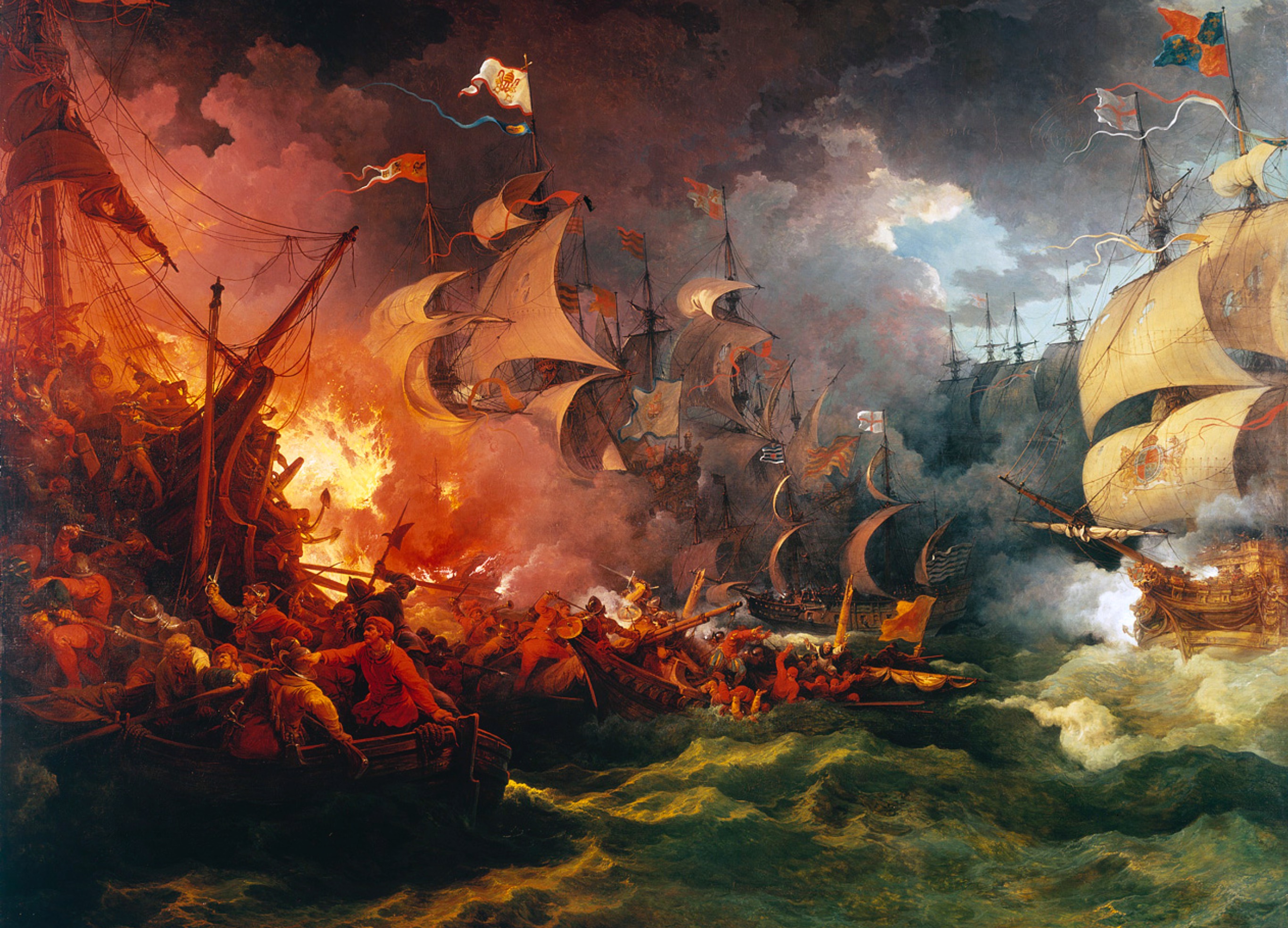Spanish Armada was a fleet of armed ships that tried to invade England in 1588. The Spanish fleet has often been called the Invincible Armada, supposedly because the Spaniards thought it could not be defeated. But the English fleet defeated the Armada. The failure of the Armada was a great blow to the prestige of Spain, then the world’s most powerful country. Spain remained a major power after the battle, but English merchants and sailors challenged the Spaniards with greater confidence throughout the world.

Background to battle.
Bad feeling between Spain and England had existed since the 1560’s. Spain was taking gold and silver from lands it had claimed in the Americas, and England wanted some of this wealth. Queen Elizabeth I encouraged Francis Drake and other English seamen to raid Spanish ships and towns, even though the countries were officially at peace.
Religious differences also caused conflict between the two nations. Spain was a Roman Catholic country, and most of England was Protestant. In the 1560’s, the English began to aid the Dutch Protestants who were rebelling against Spanish rule (see Netherlands ). In the early 1580’s, King Philip II of Spain started planning to send a fleet and army to invade England. He hoped to end the English raids and to make England a Catholic country.
The two fleets.
Philip began to assemble the Armada in January 1586. Spain built many new warships and armed its existing ones more heavily. It also rented many foreign ships. In 1587, Francis Drake raided Cadiz harbor in Spain and destroyed about 30 ships. The Armada was brought together in May 1588, at the Portuguese port of Lisbon, which at that time was ruled by Spain. The fleet had about 130 ships and more than 29,000 men, most of them soldiers. Some of the ships lacked guns and experienced gunners, and others lacked ammunition because they were only transport ships. Philip named the Duke of Medina Sidonia to command the Armada. The duke was an experienced military planner but an inexperienced seaman.
Meanwhile, England armed many of its merchant vessels and added them to its warships. England’s fleet had about 200 ships and nearly 16,000 men, most of them sailors rather than soldiers. Admiral Lord Howard of Effingham commanded the fleet, and his squadron leaders included Drake, John Hawkins, and Martin Frobisher.
The battle.
The Armada left Lisbon on May 30, 1588 (May 20 according to the calendar then used in England). It entered the English Channel on July 30 (July 20) and fought long-range gun duels with English warships during the next few days. On August 6 (July 27), it anchored at Calais, France. Medina Sidonia had planned to meet barges carrying Spanish troops from nearby Dunkerque, a port then in the Netherlands. But Dutch gunboats prevented the barges from meeting the Armada. This act doomed the Armada to failure.
In the early hours of August 8 (July 29), the English sent eight fire ships (vessels filled with gunpowder and set on fire) toward the Armada. The Spanish ships sailed out to sea to escape the flames. Later that morning, about 60 English ships attacked an equal number of Spanish ships off the French port of Gravelines. The English sank two Spanish ships and damaged others.
The crippled Armada fled to the North Sea. It returned to Spain by sailing north around the islands of Great Britain and Ireland. High winds wrecked many ships off Ireland’s coast, and only about two-thirds of the fleet reached Spain.
See also Drake, Sir Francis ; Elizabeth I ; Girona ; Philip II .
